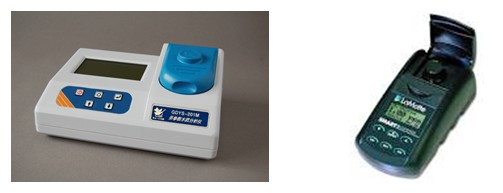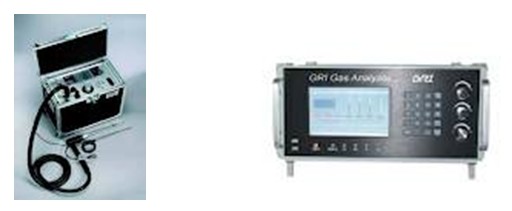Introduction
Water analyzer
It is an instrument for analyzing the characteristics of water and the specific substances contained. It plays an important role in water environment monitoring.

Gas analyzer
It is an instrument for the analysis of the composition of environmental gases, used for the detection of atmospheric composition in specific occasions, such as O2, CO2, CO, CH4 monitoring.

Brief introduction of principle
There are several methods for water and gas analysis
1. Chemical detection
The disadvantages are short life and replacement needed.
2. Photoelectric detection (Beer Lambert Law applied)
Good accuracy and linearity. Long life and no need to replace.
Beer Lambert Law
Beer Lambert Law: when a beam of parallel monochromatic light passes vertically through a certain light absorbing substance which is uniform and non-scattering. The absorbance A is proportional to the concentration C of the absorbing substance and the thickness B of the absorbing layer.
The mathematical formula is as follows:
A=lg(1/T)=Kbc
Where A is the absorbance, T is the transmissivity, the ratio of transmitted light intensity to incident light intensity,
c is the concentration of light absorbing substances, b is the thickness of absorption layer.
Principle block diagram

A particular composition in water or gas will absorb monochromatic light of a specific wavelength. The higher the concentration of the specific component is, the more monochromatic light it absorbs and the less light it transmits.
Recommended model
Light source:
Halogen lamp
Full spectrum energy of (340-2000nm supplied). Operate with filter to provide monochromatic light.
LED
Laser diode (VCSEL laser diode, e.g. 763nm, 948nm)
Mid infrared light source (2μm-12μm spectral energy supplied)
Receiver
Solar cells
Types of common silicon:
PC10-6,PIN-13DSB,PIN-6.6DPC, UV-035DQ, UV-005DQ,etc
Others:
Ge,InGaAs,PbS,PbSe,etc
RM 707-708, 258 Guoxia Road, Yangpu District,Shanghai, China PC:200433
Copyright © 2019-2020.Light-Catcher Co.,Ltd All rights reserved.沪ICP备15002270号-1

